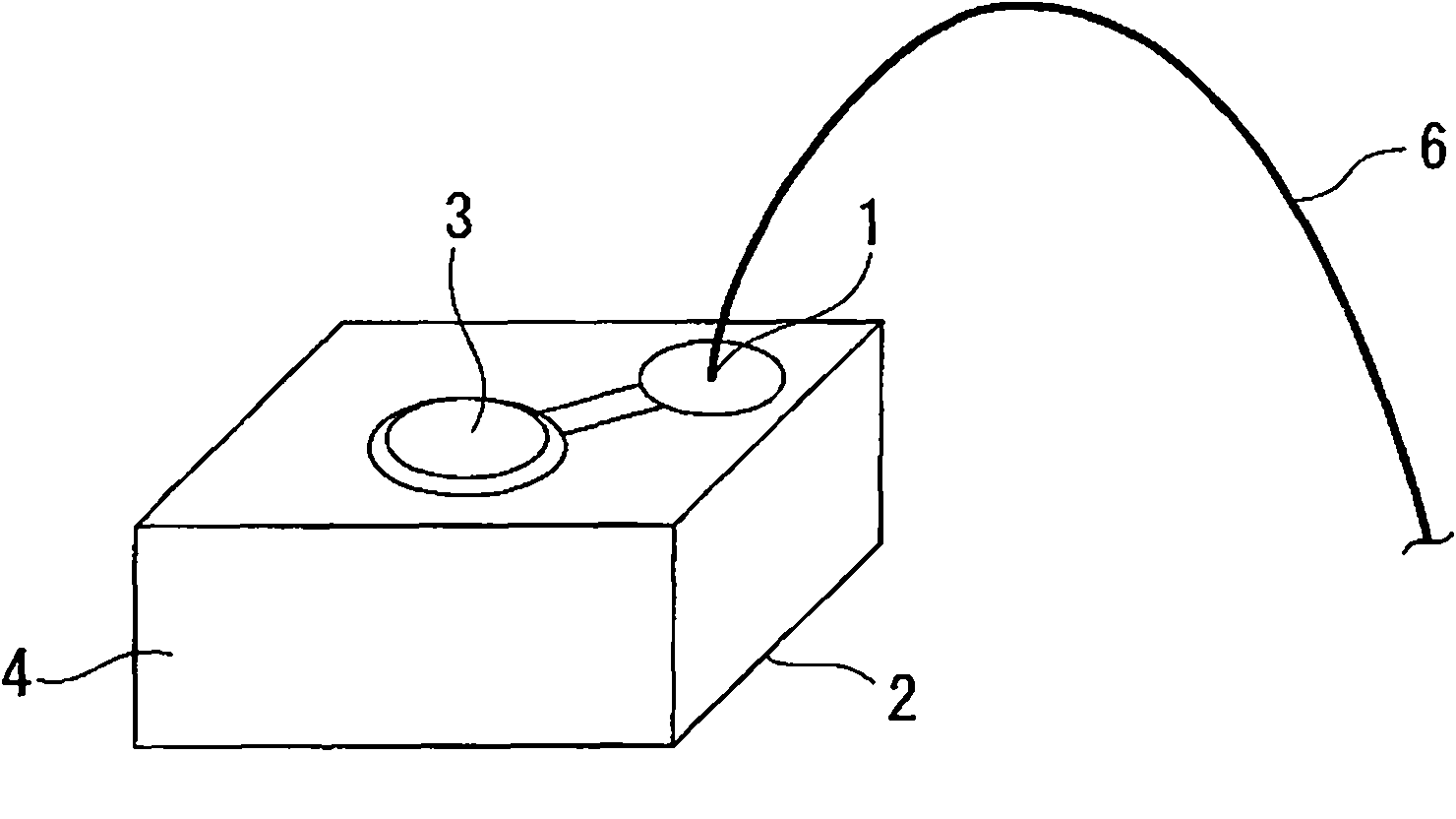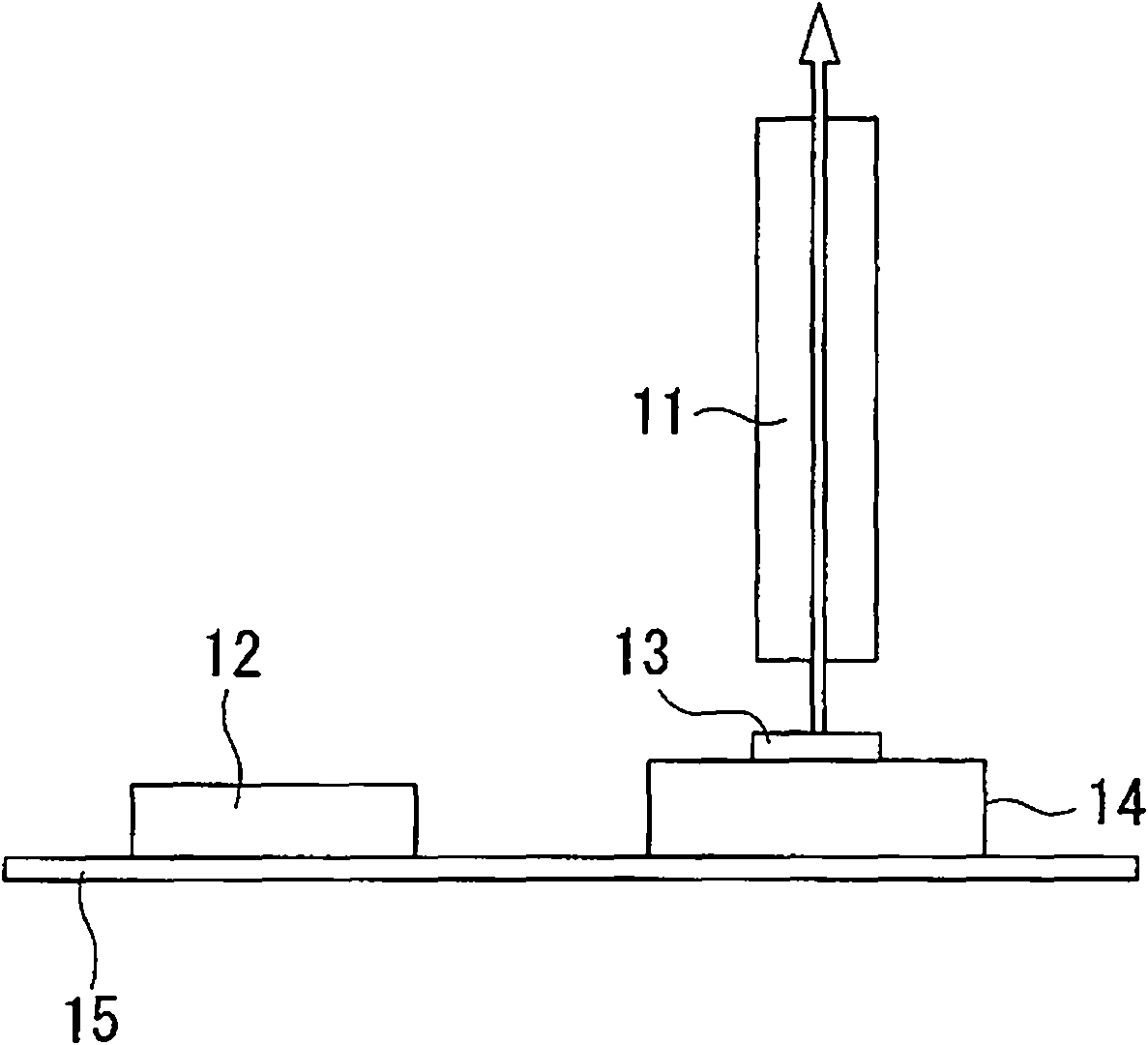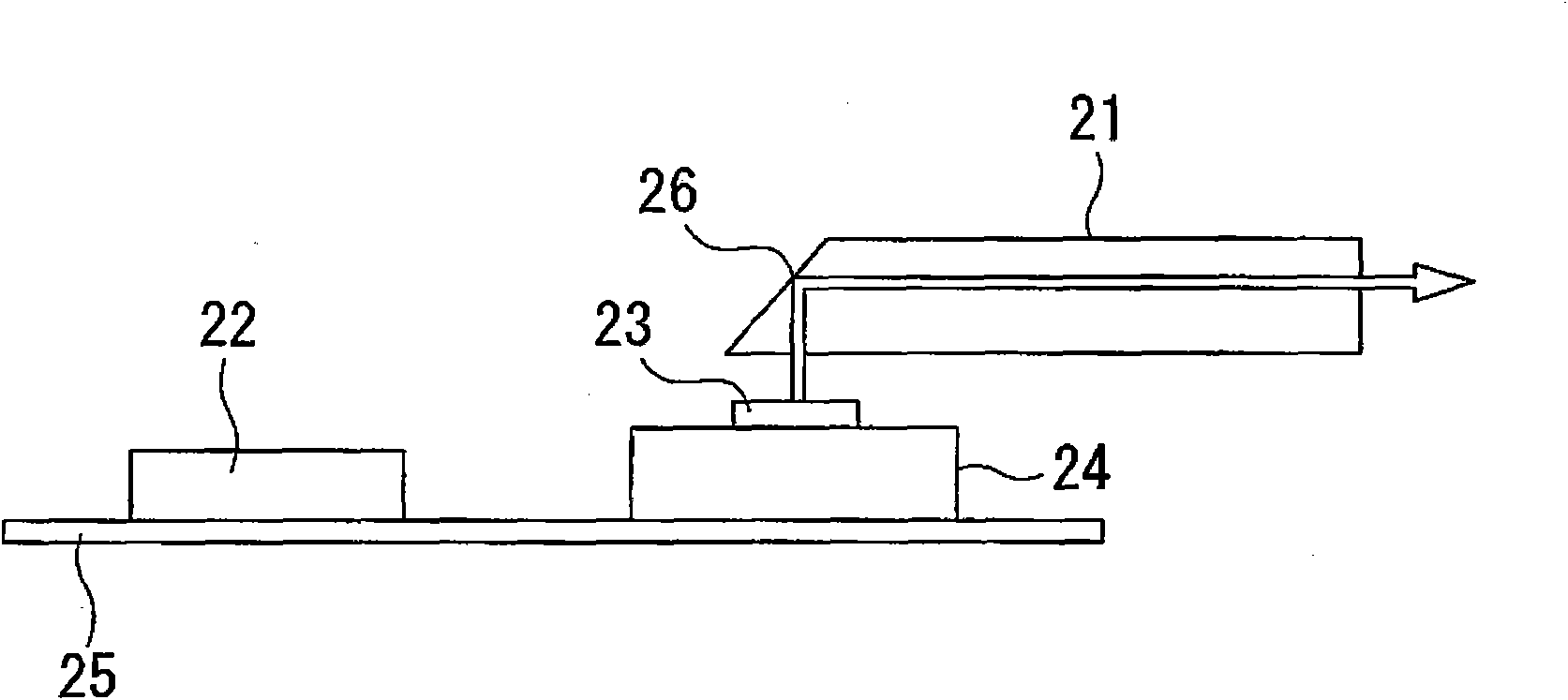Optical transmitter and receiver apparatus
A technology of optical transceiver and optical fiber, which is applied in the field of optical transceiver devices, can solve the problems of high price, 45° reflector takes a lot of time and cost, and high power consumption, and achieves the effects of low power consumption, low heat generation, and improved installation strength
- Summary
- Abstract
- Description
- Claims
- Application Information
AI Technical Summary
Problems solved by technology
Method used
Image
Examples
Embodiment 1
[0109] make Figure 4 The sub-mounted substrate shown. The material of the submount substrate is aluminum nitride. The electrode material on the sub-mount substrate is made of gold-tin alloy in consideration of the connection strength with the gold wire when mounting the light-receiving and light-emitting elements.
[0110] Such as Figure 4 As shown in , mount the light-receiving and emitting elements on the sub-mount substrate. The mounting is done with conductive silver paste and gold wires. The light-emitting element uses a VCSEL with an emission center wavelength of 850nm, and the light-receiving element uses a PD.
[0111] Next, the sub-mount substrate on which the light-receiving and light-emitting elements are mounted on the side is mounted on the printed circuit board. The submount substrate is transported by vacuum tweezers, and soldered to the electrode pads of the printed circuit board with conductive silver paste.
[0112] Next, alignment and fixation of the...
Embodiment 2
[0116] Using the optical communication module actually manufactured according to the manufacturing method of the present invention, an image transmission experiment was carried out.
[0117] As a light emitting element, a surface emitting laser (VCSEL) with an emission wavelength of 850 nm and a cutoff frequency of 2.5 GHz was used. VCSEL uses commercially available products such as figure 1 As shown, the selected type is an element of the type in which the anode is bonded to the electrode using wire bonding and the cathode is bonded to the electrode using conductive paste.
[0118] As a light receiving element, a GaAs photodiode (PD) with a cutoff frequency of 2.5 GHz was used. For the PD, a commercially available product is used, and the shape is selected to be an element in which the anode is conductive by wire bonding and the cathode is conductive by conductive paste, similarly to the VCSEL.
[0119] As the submount substrate, the same substrate as the submount substrate...
Embodiment 3
[0132] An optical transceiving device is used between the head-mounted display 123 and its control device 125 . A brief composition is shown in Figure 15 . This device is a goggle-type head-mounted display 123 worn on the head by the subject 124, and is in a form matched and fixed to the outer circumference of one ear, and the optical waveguide 126 is taken out from the rear of the part worn on the ear. In order to improve the matching feeling to the ear, and for the sake of designability, the extraction part of the optical waveguide 126 is as follows: Figure 16 As shown, it includes: a printed circuit board 127 disposed on the rear end of the head-mounted display 123, a sub-mounted substrate 128 mounted on the printed circuit board 127, a light-receiving and light-emitting element mounted on the side of the sub-mounted substrate 128, and a light-emitting diode. The optical waveguide path 129 connected to the element by coupling. Since the head-mounted display 123 is smal...
PUM
| Property | Measurement | Unit |
|---|---|---|
| diameter | aaaaa | aaaaa |
| refractive index | aaaaa | aaaaa |
| refractive index | aaaaa | aaaaa |
Abstract
Description
Claims
Application Information
 Login to View More
Login to View More - R&D
- Intellectual Property
- Life Sciences
- Materials
- Tech Scout
- Unparalleled Data Quality
- Higher Quality Content
- 60% Fewer Hallucinations
Browse by: Latest US Patents, China's latest patents, Technical Efficacy Thesaurus, Application Domain, Technology Topic, Popular Technical Reports.
© 2025 PatSnap. All rights reserved.Legal|Privacy policy|Modern Slavery Act Transparency Statement|Sitemap|About US| Contact US: help@patsnap.com



